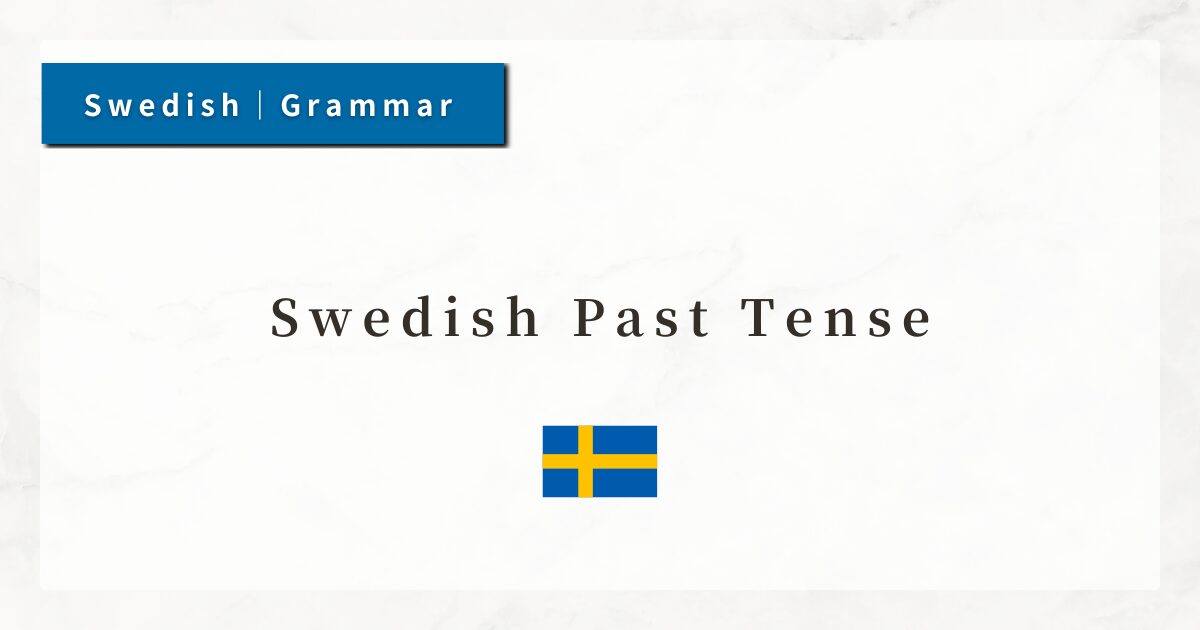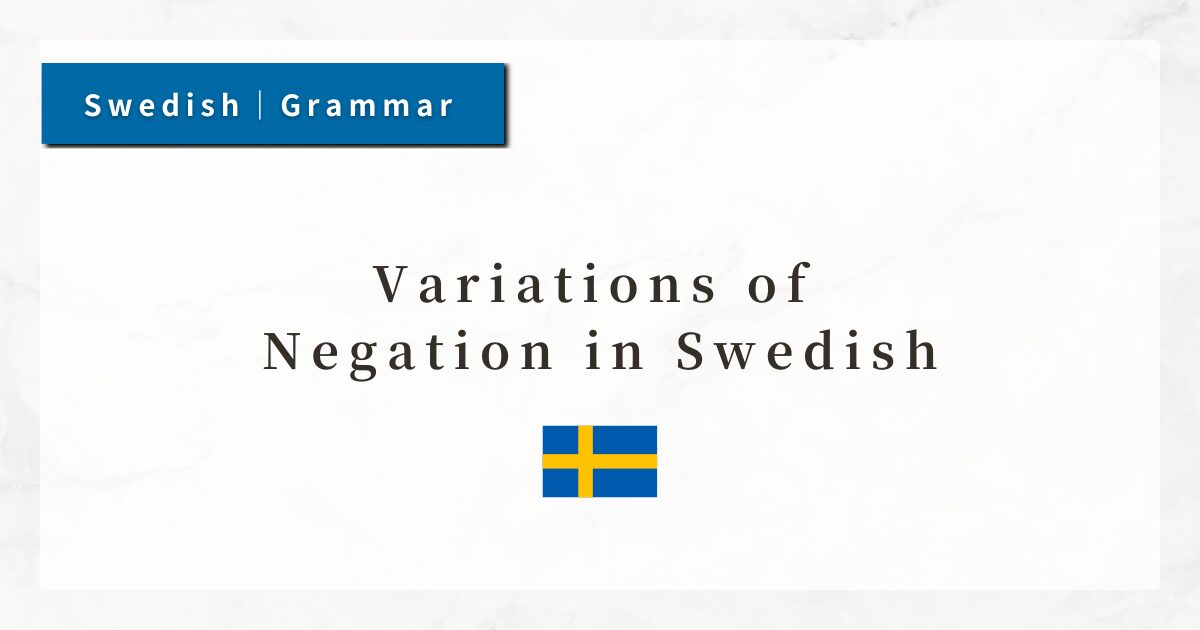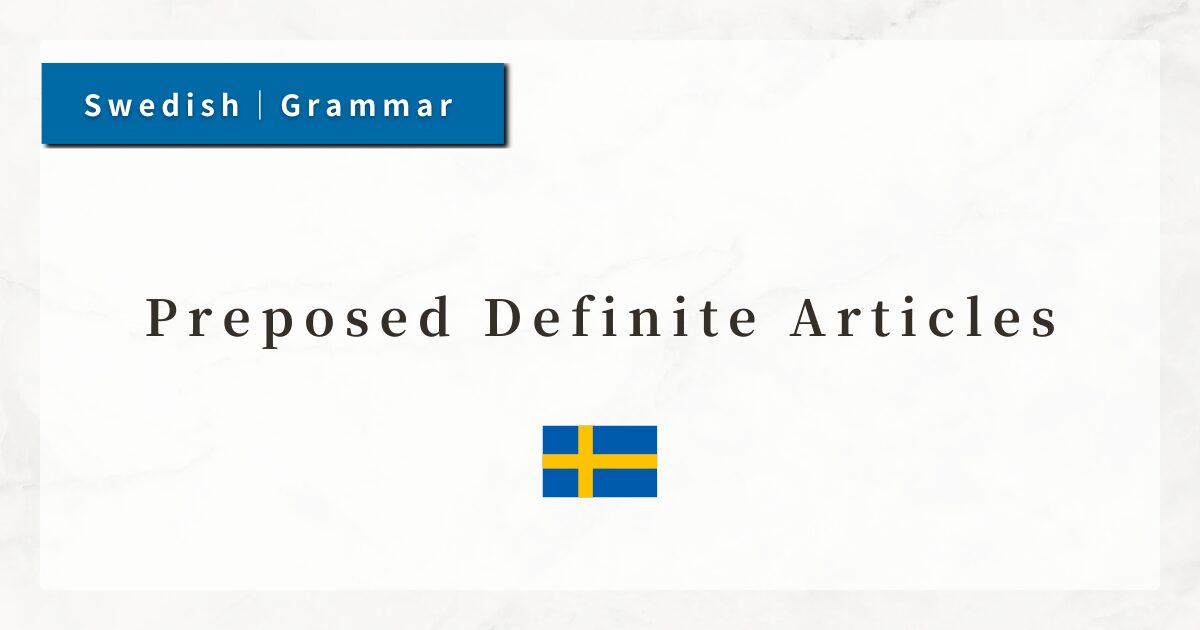#26 Swedish Past Tense|Verb Conjugation Rules and Usage

In Swedish, the past tense is used to describe past events or states. This corresponds to the English past tense (worked, lived, studied, etc.).
Swedish verbs are divided into regular and irregular verbs, depending on how they conjugate. It is important to learn the patterns of each type.
In this lesson, I will explain step by step how to form and use the past tense, its word order rules, and key points regarding irregular verbs.
1. The Basic Rules of the Past Tense
The Swedish past tense is used when describing actions or states that are already completed in the past, such as “did” or “was.” It is used in situations such as:
- Talking about clearly defined past events.
- When a state or situation was limited to a specific time in the past.
- Talking about habitual actions in the past.
In other words, the past tense is used when the time of the event is relatively clear.
The key point is that the past tense refers to a “separate past” that does not extend into the present.
2. How to Form the Past Tense
Swedish verbs are divided into four main conjugation groups (Groups 1–4). Each group has different rules for forming the past tense.
2-1. The Four Conjugation Groups
| Conjugation group | Characteristics of the past tense | Example verbs | Meaning |
|---|---|---|---|
| Group 1 | Past tense ends in -de | arbeta → arbetade | to work |
| Group 2 | Past tense ends in -de / -te | köra → körde | to drive |
| Group 3 | Past tense ends in -dde | bo → bodde | to live |
| Group 4 | Irregular changes | skriva → skrev | to write |
2-2. Group 1: Verbs ending in -de
This is the most common and basic group. Verbs in the infinitive form end in -a, and their past tense is formed by adding -de to the stem.
This group is regular and easy for beginners to learn.
| Tense | Example sentence |
|---|---|
| Infinitive: arbeta | Jag vill arbeta i Japan. (I want to work in Japan.) |
| Past: arbetade | Jag arbetade igår. (I worked yesterday.) |
2-3. Group 2: Verbs ending in -de / -te
Many verbs whose stems end in consonants belong to this group. The final consonant determines whether the past tense takes -de or -te.
-de verbs: stems ending in voiced consonants (b, d, g, etc.)
| Tense | Example |
|---|---|
| Infinitive: ringa | Jag vill ringa dig. (I want to call you.) |
| Past: ringde | Jag ringde henne. (I called her.) |
-te verbs: stems ending in voiceless consonants (p, t, k, s, etc.)
| Tense | Example |
|---|---|
| Infinitive: köpa | Vi vill köpa en bil. (We want to buy a car.) |
| Past: köpte | Vi köpte en ny bil. (We bought a new car.) |
2-4. Group 3: Past tense -dde
Verbs ending in a vowel other than -a are classified here. The infinitive itself is the stem, and the past tense is formed by adding –dde.
Group 3 is relatively small but includes frequently used verbs.
| Tense | Example |
|---|---|
| Infinitive: bo | Jag vill bo i Stockholm. (I want to live in Stockholm.) |
| Past: bodde | Jag bodde där förut. (I lived there before.) |
2-5. Group 4: Irregular verbs
This group undergoes the most changes. The stem itself may change, and the past tense forms can differ significantly.
| Infinitive | Past | Meaning | Example |
|---|---|---|---|
| vara | var | to be | Jag var trött. (I was tired.) |
| ha | hade | to have | Hon hade mycket pengar. (She had a lot of money.) |
| gå | gick | to go | Vi gick hem. (We went home.) |
| få | fick | to receive | Jag fick ett brev. (I received a letter.) |
3. Word Order in Affirmative, Negative, and Interrogative Sentences
3-1. Affirmative Sentences
The basic word order is SVO (Subject + Verb + Object), just like in English.
- Jag läste en bok.
(I read a book.) - Hon köpte en tröja.
(She bought a sweater.)
3-2. Negative Sentences
The word inte (not) is placed immediately after the past tense verb.
- Jag arbetade inte igår.
(I did not work yesterday.) - Vi köpte inte bilen.
(We did not buy the car.)
3-3. Interrogative Sentences
To form a yes/no question, place the verb before the subject. The verb form does not change in negatives or questions—only the word order changes.
- Arbetade du igår?
(Did you work yesterday?) - Gick han till skolan?
(Did he go to school?)
4. Summary
- Swedish past tense verbs are divided into four groups.
- Group 1: add -de to the stem.
- Group 2: -de or -te, depending on the final consonant.
- Group 3: verbs ending in vowels (other than -a) → -dde.
- Group 4: irregular verbs with major changes.
- In negative and interrogative sentences, the verb form remains the same; only word order and the placement of inte matter.




